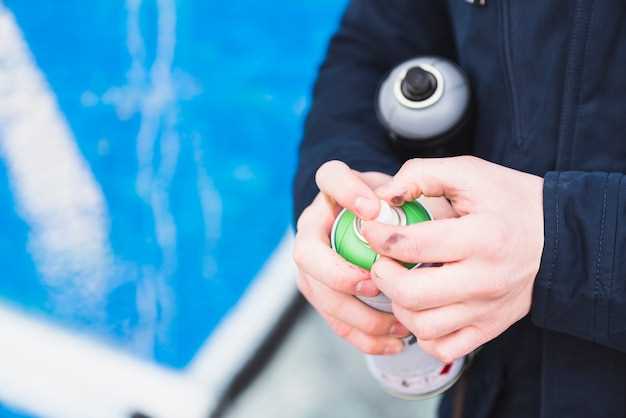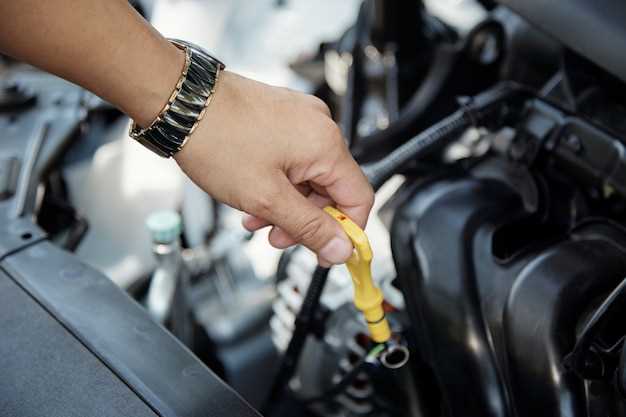
Maintaining your Volkswagen Corrado’s cooling system is essential for optimal performance and longevity. Over time, contaminants and rust can accumulate in the coolant, reducing its efficiency and leading to potential engine overheating. Regular service of the cooling system not only ensures that your vehicle runs smoothly but also prolongs its lifespan.
Flushing the cooling system is a critical process that involves removing the old coolant and any built-up debris, then replacing it with fresh fluid. This not only helps in maintaining the proper temperature but also prevents corrosion within the system. Understanding the steps to effectively flush the cooling system can empower you as a vehicle owner, ensuring you can tackle this necessary maintenance task with confidence.
In this article, we will guide you through the essential steps needed to flush the cooling system of your Corrado. From gathering the required tools to disposing of old coolant correctly, following these steps will help maintain your vehicle’s cooling efficiency and safeguard your engine from potential damage.
Gathering Necessary Tools and Materials
Before you begin the process of flushing the Corrado cooling system, it’s essential to gather all the necessary tools and materials. Proper preparation will ensure a smooth service and effective flush of the radiator. Here is a list of items you will need:
- Coolant Flush Kit: This kit typically includes chemicals designed to clean and remove any contaminants from the cooling system.
- New Coolant: Select the appropriate coolant for your Corrado. The type of coolant matters for optimal performance.
- Radiator Flush Tool: A specialized tool may assist in removing debris from the radiator more effectively.
- Wrench Set: Ensure you have a good set of wrenches to disconnect hoses and fittings securely.
- Hose Clamps: New clamps may be needed if the old ones are damaged during the flush process.
- Drain Pan: This will catch the old coolant during the flushing process, preventing spills and mess.
- Funnel: A funnel helps in pouring new coolant into the system without spillage.
- Safety Glasses: It’s important to protect your eyes during this procedure, especially when handling chemicals.
- Gloves: Wear gloves to protect your hands from coolant and any hazardous materials.
Once you have gathered these tools and materials, you will be ready to efficiently flush the cooling system of your Corrado. Taking the time to prepare will simplify the service and enhance the longevity of your vehicle’s radiator.
Preparing the Vehicle for Coolant Flush

Before initiating a coolant flush, it is essential to prepare your vehicle to ensure a smooth and efficient service. First, park the vehicle on a flat surface and turn off the ignition. This step is crucial for safety and makes accessing the engine compartment easier.
Next, allow the engine to cool down completely. Hot coolant can cause burns and other injuries during the flush process. Once the engine is cool, open the hood and locate the radiator cap. It is advisable to wear gloves and eye protection while handling coolant and working around the engine.
Check the owner’s manual for any specific instructions or recommendations regarding coolant flush procedures for your Corrado. This will provide information about the type of coolant required, the capacity of the cooling system, and the recommended intervals for flushing.
Before proceeding with the flush, inspect the coolant reservoir and surrounding hoses for leaks or damage. If any issues are found, they should be addressed prior to the flush to prevent further complications. Ensure that the necessary tools and equipment, such as a drain pan and new coolant, are on hand for the process.
Finally, if your vehicle is equipped with a cooling fan that activates automatically, disconnect the battery or ensure that it is turned off to avoid accidental engagement during the service. With these preparations completed, you are ready to proceed with the coolant flush effectively.
Draing the Old Coolant from the System
To effectively flush the cooling system of your Corrado, the first step is draining the old coolant. This process is crucial for maintaining efficient engine temperatures and preventing corrosion. Begin by ensuring the engine is cool to avoid burns or injuries.
Locate the radiator drain valve, usually positioned at the bottom of the radiator. Place a suitable container beneath the valve to catch the old coolant. Open the valve carefully, allowing the coolant to drain completely. It is advisable to remove the radiator cap beforehand to facilitate smoother flow.
Once the coolant has fully drained, check the condition of the old fluid. If it appears contaminated or rusty, this indicates that the cooling system may need additional service. After draining, close the drain valve tightly to prevent leaks during the flushing process.
Now that the old coolant is removed, you can move on to flushing the system with clean water. This will help eliminate any remaining debris and old coolant residues, ensuring optimal performance when new coolant is added.
Cleaning the Radiator and Hoses
To ensure the optimal performance of your Corrado’s cooling system, it is essential to regularly clean the radiator and hoses. Over time, debris and contaminants can accumulate, impacting the efficiency of the coolant flow. Begin the cleaning process by inspecting the radiator for any signs of leaks or damage. Make sure to check the condition of the hoses as well, as worn or brittle hoses can lead to coolant loss.
Next, drain the existing coolant from the system. This step allows you to eliminate old, contaminated coolant and provides better access to the radiator and hoses for thorough cleaning. After draining, use a high-pressure hose to flush the radiator. Start at the bottom and work your way up to dislodge any built-up dirt and sediment. Be cautious of any pinholes or weak spots in the radiator while performing this action.
Additionally, remove the hoses from the radiator for a more comprehensive cleaning. Inspect the interior of the hoses for any signs of blockage or corrosion. Utilize a mixture of water and radiator cleaner to scrub both the hoses and the radiator’s internal passages. This solution will help dissolve any deposits that have formed. After scrubbing, rinse each component thoroughly until only clear water flows out, ensuring that no residual cleaning agents remain.
Once the cleaning is complete, reinstall the hoses and reconnect them to the radiator. Before refilling the system with fresh coolant, double-check all connections to make sure there are no leaks. Keeping the radiator and hoses clean is crucial for effective heat dissipation and the overall longevity of your vehicle’s service. Regular maintenance will help prevent costly repairs and keep your Corrado running smoothly.
Refilling with New Coolant and Additives
Once you have successfully flushed the Corrado cooling system, it’s essential to refill it with fresh coolant and any necessary additives. Begin by ensuring you have the appropriate coolant for your vehicle model. It’s crucial to use the recommended type, which often includes a mix of water and antifreeze, to prevent engine overheating and corrosion.
Before starting, make sure the radiator cap is securely tightened to avoid any leaks. If your vehicle has a reservoir, check its level before adding new coolant. Slowly pour the coolant mixture into the radiator or the reservoir, whichever is applicable. This gradual process helps eliminate air bubbles that could cause issues within the cooling system.
While refilling, keep an eye on the coolant level. It’s advisable to fill it up to the manufacturer’s recommended mark. After the initial fill-up, start the engine and allow it to reach operating temperature. This process enables the new coolant to circulate through the radiator and engine block.
After the engine has warmed up, turn it off and let it cool for a few minutes. Check the coolant level again and add any additional coolant if necessary. Adding additives specifically designed for radiators can enhance the cooling system’s performance, providing extra protection against corrosion and improving heat transfer capabilities. Ensure to follow the manufacturer’s instructions regarding the amount and type of additives added.
Finally, inspect the cooling system for any leaks after the refill. Keeping the system sealed and maintaining the coolant at optimal levels is crucial for the longevity and efficiency of your vehicle. Regular checks and timely replacements of coolant will contribute to a well-functioning and reliable engine.
Testing the Cooling System After Flush

After performing a coolant flush, it is essential to thoroughly test the cooling system to ensure that it functions correctly and efficiently. This process not only verifies that the flush was successful but also confirms that all components, including the radiator and hoses, are in good working condition.
Begin by visually inspecting the radiator and surrounding areas for any signs of leaks. Check the connections between hoses and the radiator for moisture or coolant residue. A leak could signify a problem that needs addressing before proceeding further.
Next, start the engine and let it idle until it reaches operating temperature. Monitor the temperature gauge on the dashboard closely. It should remain within the normal operating range. If the gauge rises unexpectedly, this could indicate air pockets in the system or a malfunctioning thermostat.
Bleeding the system is an important step after a flush. Make sure to release any trapped air by running the engine with the radiator cap off, allowing coolant to circulate. Once any air is expelled, replace the radiator cap securely.
After the system has been bled, perform a road test. Drive the vehicle for a short distance while paying attention to the performance of the temperature gauge. A stable reading confirms that the cooling system, including the newly flushed components, is operating properly.
Lastly, check the coolant level again after the test drive. If the level drops significantly, it indicates a potential leak that requires further investigation. Regularly servicing the cooling system, including periodic flushes and inspections, will help prevent overheating and prolong the lifespan of your vehicle.










